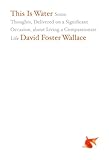 I was vaguely shocked and cautiously appalled to learn last week that Vladimir Nabokov’s “new” novel, The Original of Laura, due for release in August, isn’t, in fact, much of a novel at all.
I was vaguely shocked and cautiously appalled to learn last week that Vladimir Nabokov’s “new” novel, The Original of Laura, due for release in August, isn’t, in fact, much of a novel at all.
“This very unfinished work reads largely like an outline, full of seeming notes-to-self, references to source material, self-critique, sentence fragments and commentary” Publishers Weekly writes, in the first review of Nabokov’s posthumous work. “It would be a mistake, in other words, for readers to come to this expecting anything resembling a novel.”
Yet, the hype that has been building around this book for years – years! – has totally eclipsed the fact that the book is, in fact, actually “138 index cards”. This hype, by the by, has enjoyed more than a little support from Nabokov’s son Dmitri, and his, in retrospect, frenzy-building public questioning about whether to publish the text, which his father asked to be destroyed.
Given a charitable guess of 50 words per index card (Publishers Weekly says most of the index cards contain less than a paragraph of notes), this comes out to a “novel” of a little under 7,000 words. In other words, the text being published would be comparable to a 25-page short story (if, indeed, it were a story at all). Which makes one wonder how bad a deal Playboy, which bought the rights to excerpt the new book, got. Is the Playboy tease going to be flash fiction?
I guess the fact that this book will soon be published (and the fact that I will almost certainly purchase and read it) leads me to ask two big (to my mind) questions, one Nabokov specific and one more general to the world of publishing today.
First, why is it that when it comes to the world of Nabokov we are all suddenly academics? I know of few people outside of the academic world who purchase annotated works, yet I have literally dozens of friends who have purchased, and devoured, The Annotated Lolita. Now, Knopf is publishing The Original of Laura by reproducing the original cards, “with a transcription below of each card’s contents.” Obviously, the main reason Knopf is doing this is to fill the pages – it is hard, even in the best of times, to sell a 25-page book for 35 dollars. But there is also the thrill that I know I get and others must get as well of Nabokov scholarship. Enjoying what the master wrote, how he wrote it. Puzzling the pieces together.
Perhaps this scholarship-craze is particular to Nabokov (a strong and unverifiable contention, I know) because his novels demand it. You can’t read a book like Pale Fire, or even a relatively simple book like Pnin, without knowing that you’re entering a world, Borges-like, of so many levels, of labyrinths upon labyrinths. Breaking the labyrinths down into the fundamentals of the maze (to draw this metaphor out) seems helpful not only in receiving new material from the master, but in analyzing this new composition to shed light on how the older, more familiar works were composed.
 Second, though (and this is the more problematic question for me), why is it that books are being published in the contemporary market that don’t have the length or stamina of books. I am thinking, in particular, of David Foster Wallace’s commencement speech to the Kenyon College 2005 graduating class, published posthumously as This Is Water: Some Thoughts, Delivered on a Significant Occasion, about Living a Compassionate Life. I had read the commencement speech long before it was officially published. In fact, shortly after Wallace delivered it a friend sent it to me over e-mail. It took me about fifteen minutes to read. And I read slowly.
Second, though (and this is the more problematic question for me), why is it that books are being published in the contemporary market that don’t have the length or stamina of books. I am thinking, in particular, of David Foster Wallace’s commencement speech to the Kenyon College 2005 graduating class, published posthumously as This Is Water: Some Thoughts, Delivered on a Significant Occasion, about Living a Compassionate Life. I had read the commencement speech long before it was officially published. In fact, shortly after Wallace delivered it a friend sent it to me over e-mail. It took me about fifteen minutes to read. And I read slowly.
Not that it shouldn’t be written, or read. On the contrary, Wallace’s commencement speech is both moving and necessary, in a way that many full-length texts are not. Yet, why the subterfuge? Sell it as an essay, in a magazine, or in a volume with other texts. But why pretend that this is a stand-alone book?
In order to fatten up Wallace’s speech (lacking the help of index cards that Nabokov so conveniently provided), the publisher decided to print only one sentence on every page. So, not only is this essay published in book form, it is actually less pleasant and more cumbersome to read than the e-mail I received of the speech was four years ago.
I guess, my plea is, then, to stop the games. If you’re publishing something that’s great writing but that clearly isn’t a book, don’t call it a book. Call it an essay. True, you probably won’t be able to sell it for $15 (the list price of Wallace’s speech). But on the other hand, think of all the paper you’ll save.








